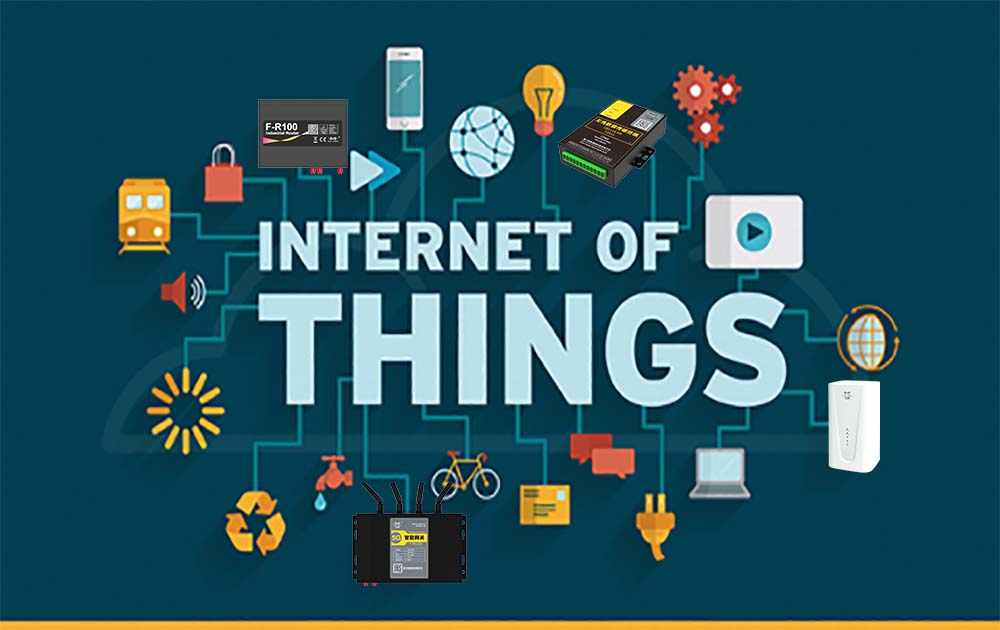Four-Faith Smart Power LoRa Base Station F8L10GW, a wireless communication base station based on the LoRa protocol, is suitable for power wireless communication network deployment. It can be connected to LoRaWAN terminals of various application nodes, and the collected information is transmitted to the cloud server through 3G/4G or wired Ethernet.
1. LoRa base station coverage
LoRa is a low-power local area network wireless transmission standard established by semtech. Long-distance transmission generally requires high power consumption, and low-power transmission is generally difficult to achieve long-distance coverage. In this case, it is necessary to Long Range Radio (Long Range Radio) LoRa debuted. The biggest feature of LoRa is that under the same power consumption, it can travel farther than other wireless methods. It has achieved the unity of long distance and low power consumption. Under the same power consumption, it expands 3-5 times the distance of traditional wireless video communication.
The advantage of LoRa lies in its long-distance capability in technology. A lora base station and gateway can even cover a city or hundreds of square kilometers. In a specific location, the transmission distance depends largely on the surrounding environment and obstacles. things, but LoRa and LoRa gateways have a link budget
outperforms any other standardized communication technology. Link budget, usually expressed in decibels (dB), is the primary factor in determining distance in a given environment.
2. The composition of LoRa base station network
LoRa network generally consists of four parts: terminal equipment, gateway equipment, network server, and application server
The terminal device is generally a small module or a terminal device with an embedded module. The transmission distance of this device can generally reach several kilometers, such as water and electricity meters, smoke alarms, logistics locators, temperature and humidity sensors, etc.;
The gateway device is used to receive the data sent by the terminal device and send it together, so people generally call it a LoRa concentrator, which collects the data together and sends it in a centralized manner, according to the network that sends the data. It can be divided into Ethernet gateway, 4G gateway and wifi gateway, and there are also gateways that integrate several gateways and can convert protocols to each other, such as AC701 gateway;
The network server is generally built on the cloud or private server. This type of server is mainly used to process the parameters uploaded by the LoRa gateway and nodes, and belongs to the server on the device side;
The application server is a server directly facing the client terminal, which can directly convert the received signal and then send it to the client terminal.
3. What are the characteristics of LoRa base station?
3.1 Long transmission distance: it can reach 2-5 kilometers in towns and 15 kilometers without obstacles;
3.2 Working frequency: ISM frequency band, including common 433, 868, 915 and other frequency bands;
3.3 Node capacity: One LoRa gateway base station can connect thousands of LoRa nodes;
3.4 Transmission rate: hundreds to dozens of kbps, the lower the rate, the longer the transmission
3.5 Modulation method: based on spread spectrum technology, a variant of linear modulation spread spectrum, with forward error correction capability.
4. What are the differences between the Lora gateway and the Lora base station?
The Lora gateway uses the lora communication protocol technology, which is only a device for data collection and transmission. With the development of the Industrial Internet of Things, the functions of the lora gateways have also changed, and the functions of the lora base station are getting closer and closer. The lora base station not only supports the sending and receiving of data, but also can configure a software system for data processing, and the lora base station is not limited to the use of ad hoc networks, but can be connected to the mobile external network for data interaction. At present, the lora gateway host is also constantly being upgraded. It can not only connect to other lora terminals, collect terminal data or send commands to the terminal, but also add specific external network modules. Therefore, the lora gateway and base station are basically the same in terms of use.
5. How many lora terminals does the Lora gateway bring?
Generally speaking, the number of terminals that the gateway can carry depends on the company's own design. Lingxi IoT lora gateway can carry 999 terminals, including lora tower lights, lora watches, lora data collection terminals, etc., which can basically meet the needs of general projects. terminal needs. Although the number of requirements is relatively large, whether the transmission between each terminal and the gateway is reliable, and even if dozens or hundreds of terminals are sending and receiving information to the gateway at the same time, whether there will be information delay, data packet loss, and packet sending frequency. Whether the lora gateway is suitable is the key. Now the gateway is designed with 8 uplink channels and 2 downlink channels, which greatly improves the performance and data transmission, and can send and receive in parallel in full work. The uplink and downlink channels can greatly improve the delay of sending and receiving information. The more channels, the larger the capacity. The lora network can also support functions such as ranging or positioning.




















